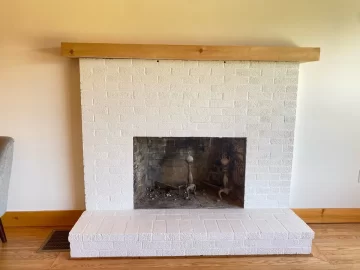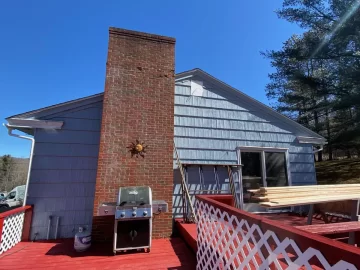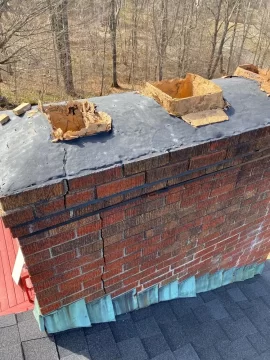I recently bought a 1958 1-story house with a brick fireplace in the living room. The chimney has three flues -- one for the fireplace, one for the boiler (oil), and one for a wood stove that used to be in the basement (no longer there and not being replaced). The fireplace hasn't been used in years and there's no cap on the chimney. The firebox seems to be in ok shape but the flue tiles are in terrible shape and the brick on the exterior of the chimney has cracks going down about 10 feet from the top.
A couple of masons have looked at it. I've been told that a total rebuild would be at least $30k. Rebuilding just the top 10 feet of the chimney would be somewhat cheaper but not all that cheap and a) won't look great (we can't find bricks that are an exact match) and b) would probably not be a lasting solution (I've been told that there's a good chance that cracks will appear further down at some point).
I'd like to keep it as a wood-burning fireplace. Are there any solutions that are less costly than rebuilding a brick chimney? Is it possible to tear down the chimney and replace it with metal pipe? I've been looking around for answers but can't seem to find anything addressing this particular question.



A couple of masons have looked at it. I've been told that a total rebuild would be at least $30k. Rebuilding just the top 10 feet of the chimney would be somewhat cheaper but not all that cheap and a) won't look great (we can't find bricks that are an exact match) and b) would probably not be a lasting solution (I've been told that there's a good chance that cracks will appear further down at some point).
I'd like to keep it as a wood-burning fireplace. Are there any solutions that are less costly than rebuilding a brick chimney? Is it possible to tear down the chimney and replace it with metal pipe? I've been looking around for answers but can't seem to find anything addressing this particular question.




